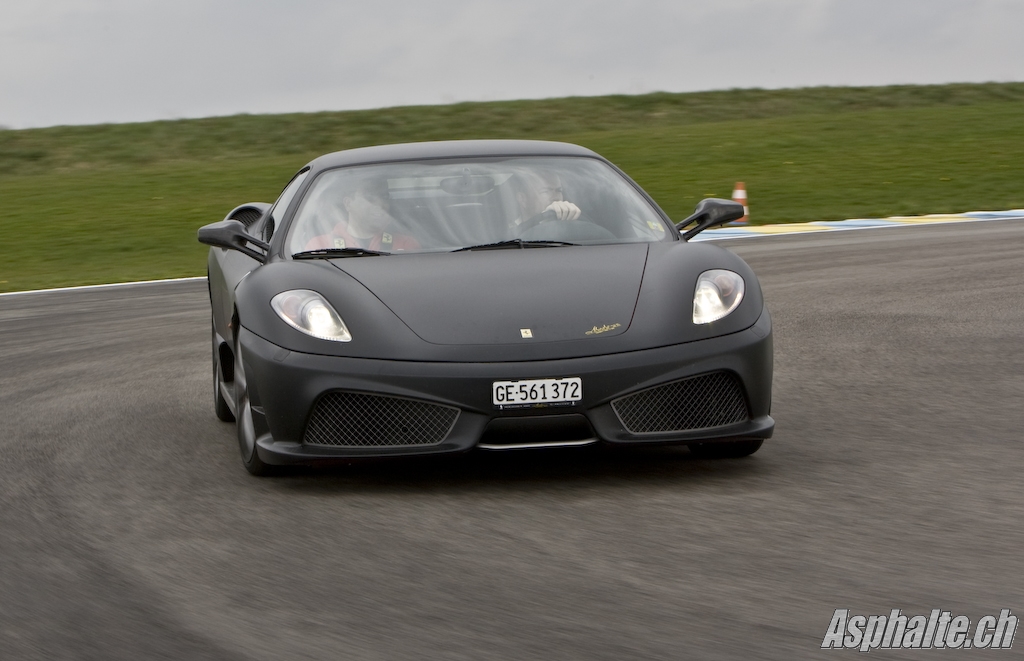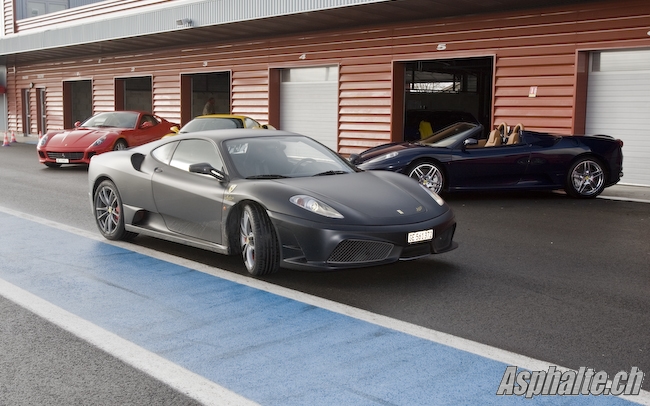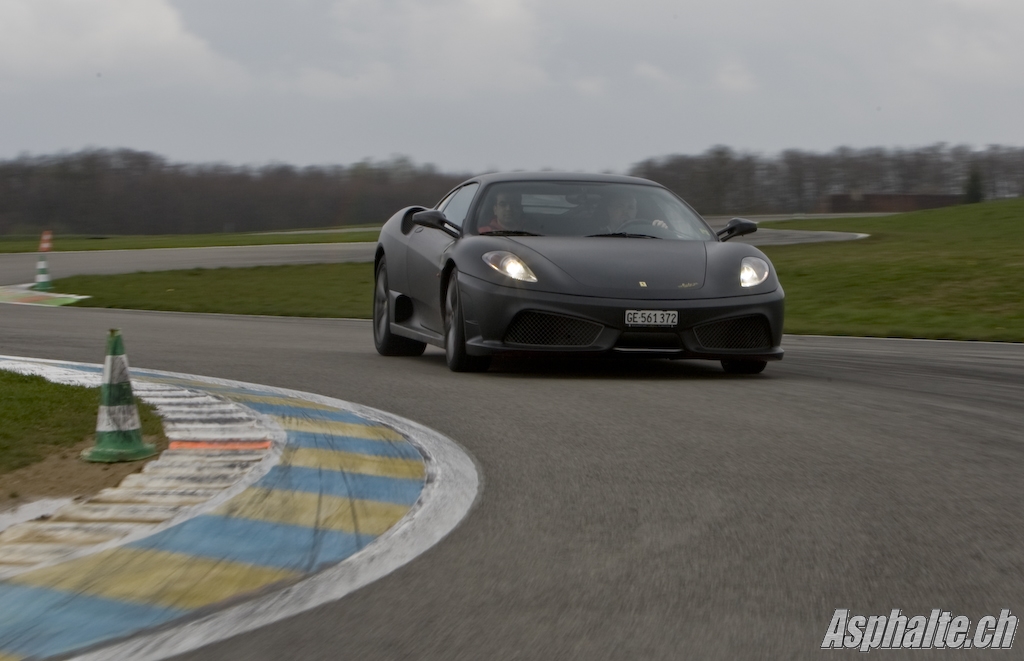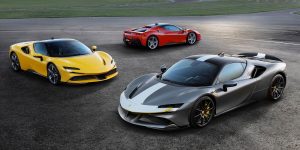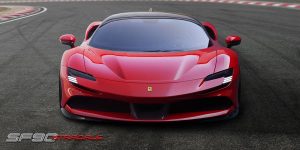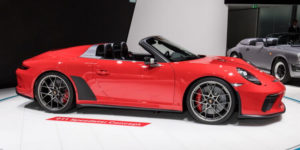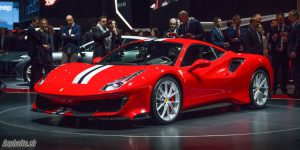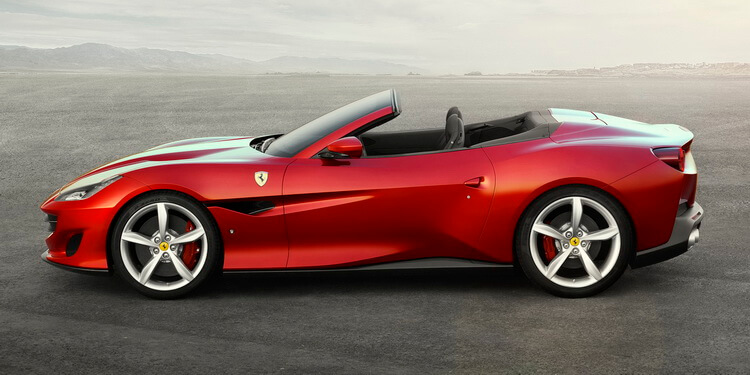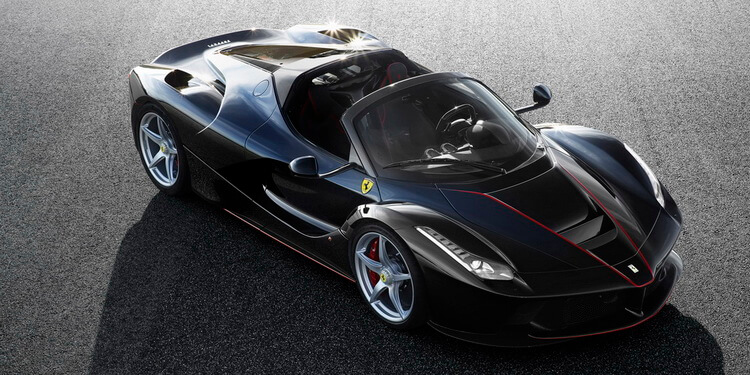Road Test: Ferrari 430 Scuderia
Like the F430 and 599, the Scuderia is equipped with the now famous Manettino, but with 5 specific settings focused on performance (what else ?):
- – a setting for slippery conditions,
- – a Sport mode for regular driving conditions,
- – a Race mode maximizing performance by limiting rear wheel slip,
- – CT off where traction control is disabled but the stability control remains engaged,
- – CST off where all driving aids are disabled.
The 430 Scuderia hence combines stability control (CST, common to the F430) with the F1-TRAC traction control developed for the 599, but whose electronic management is synchronized with the electronic differential, now called E-DIFF2. We were able to sample the respective benefits of each system on a wet track at the wheel of a 599 Fiorano and a F430. Their effectiveness is really difficult to fault, but the subtlety of their action is really striking. Far from diluting driving enjoyment, these systems offer the fortunate owner of a 430 Scuderia a broad range of settings which can be selected to adjust the car to his skills and track or driving conditions.
The carbon ceramic brakes are powerful, it is a euphemism, but sometimes a little bit grabby, as if the 6 piston calipers were reluctant to release their bite on the enormous rotors (398mm diameter, 18mm more than the F430 equivalent). The system has been designed for an uncompromising quest for performance, and Ferrari’s decision to supply their entire model range with this technology is a wise move as their standard steel brakes struggle to keep up with straight line performance.
Ferrari’s marketing department has pitched with insistence a dry weight of 1250 kg (2753 lb) and, more discretely, a kerb weight of 1350 kg (2973 lb). On Asphalte’s corner scales, the 430 Scuderia comes in at 1421 kg (3130 lb), 42.7% front, 57.3% rear, measured with a full tank gas minus 45 miles of freeway. This represents a mere 53 kg saving over a 2008 F430 with carbon ceramic brakes and sport seats, measured in the same conditions. The weight saving results are not as radical as Ferrari suggests. Efforts were not spared however, with hollow anti-roll bars, titanium springs and wheel nuts, a choiceful use of carbon fiber in the interior and engine compartment, and a rear window in Lexan. The Scuderia remains the lightest in its category, and the figures claimed by Lamborghini for the new Gallardo LP560-4 and Porsche for the 997 GT2 seem resolutely optimistic. We are eager to verify these claims at the next opportunity.
Behind the wheel, the absence of inertia is striking but steering wheel feel is odd, too light and not direct enough to my taste. The car being focused on firmness and precision, it is surprising that Ferrari chose not to fine tune this critical component compared to the F430.
With the 430 Scuderia, Ferrari has brilliantly done the 360 Challenge Stradale trick again. Behind the wheel, the difference with a F430 F1 in sports livery (bucket seats, CCB) is striking. This is by no means a criticism of Ferrari’s base model – it remains one of the best contemporary sports cars – but a testimony to the significant edge brought by the Scuderia. The 50’000 CHF difference in base price are not pocket money, but the difference in driving experience is arguably worth every penny. Against stern german opposition, it is undeniable that Ferrari continues to offer with this car the essence of extreme sports car driving.

